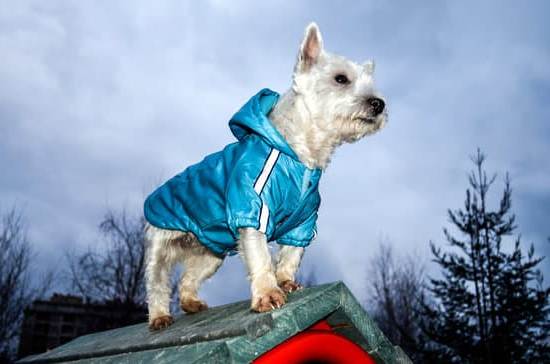Maintaining good dental hygiene is crucial for your dog’s overall health and well-being. In this article, we will discuss how to train your dog to brush his teeth, a vital aspect of canine care that is often overlooked. Understanding the importance of dental hygiene for dogs and the benefits of training your dog to brush his teeth will be our focus in this introductory section.
Just like humans, dogs can suffer from dental problems such as plaque buildup, tartar, gum disease, and bad breath. Training your dog to brush his teeth not only helps prevent these issues but also contributes to his overall health and longevity. In this article, we will explore the different aspects of dog dentistry and provide you with step-by-step guidance on how to effectively train your furry friend to embrace teeth brushing as part of his routine.
From understanding the anatomy of a dog’s mouth and common dental problems in dogs to getting started with choosing the right toothbrush and toothpaste for your dog, we will cover all you need to know about training your dog to brush his teeth. By incorporating positive reinforcement training techniques and providing practical tips for dealing with resistance or fear during teeth brushing, we aim to empower you with the knowledge and tools necessary for successful training.
So if you’re ready to take charge of your dog’s dental hygiene, keep reading.
Understanding Dog Dentistry
The Anatomy of a Dog’s Mouth
A dog’s mouth is structured differently from a human’s, with sharp teeth designed for tearing and crushing food. Dogs have 42 permanent teeth, compared to the 32 in humans. Their mouths also contain bacteria that can lead to plaque and tartar buildup if not properly maintained. Understanding the unique anatomy of a dog’s mouth is crucial in comprehending the importance of dental hygiene for your furry friend.
Common Dental Problems in Dogs
Just like humans, dogs can suffer from dental issues such as gum disease, tooth decay, and bad breath. These problems can lead to discomfort, pain, and in severe cases, even organ damage if left untreated. It is important for dog owners to be aware of these common dental problems so they can take preventive measures and seek professional help when necessary.
How Often Should You Brush Your Dog’s Teeth
Ideally, brushing your dog’s teeth should be done at least 2-3 times a week to maintain good dental health. However, some dogs may require more frequent brushing depending on their breed, age, diet, and oral hygiene habits.
Consulting with your veterinarian can help determine the best dental care routine for your furry companion. If you’re wondering how to train your dog to brush his teeth regularly then understanding the frequency of brushing required will be an essential step in this process.
Getting Started
When it comes to maintaining your dog’s overall health, dental hygiene is often overlooked but is just as important as other aspects of pet care. Proper dental care can prevent a myriad of health issues for your furry friend, including tooth decay, gum disease, and bad breath. One of the best ways to ensure good oral health for your dog is by training them to brush their teeth regularly.
To start the process of training your dog to brush his teeth, you’ll need the right tools. Choose a toothbrush that’s appropriately sized for your dog’s mouth and opt for toothpaste specifically designed for dogs. Human toothpaste can be harmful if ingested by dogs, so always use products made for pets.
Introducing your dog to the toothbrush and toothpaste may take some time and patience. Begin by allowing your pet to sniff and lick the toothbrush and toothpaste to get acquainted with the new items. Once they’ve shown interest, gently touch their teeth and gums with the brush while offering praise and rewards.
Creating a positive association with teeth brushing is crucial for successful training. Make sure that every interaction with the toothbrush is accompanied by treats or verbal praise. This will help your dog associate teeth brushing with something enjoyable rather than stressful. By following these steps, you can effectively lay the groundwork for a smoother training process on how to train your dog to brush his teeth.
| Training Techniques | Brushing Techniques |
|---|---|
| Positive reinforcement training methods | How to hold your dog while brushing his teeth |
| Using treats to encourage good behavior | Brushing techniques for different types of dogs (small, medium, large) |
| Patience and consistency in training | Dealing with resistance or fear during teeth brushing |
Training Techniques
Positive Reinforcement Training Methods
When training your dog to brush his teeth, it’s crucial to use positive reinforcement techniques. This means rewarding your dog for good behavior instead of punishing them for bad behavior. Positive reinforcement can include verbal praise, treats, or toys as rewards when your dog allows you to brush his teeth. By associating teeth brushing with positive experiences, your dog will be more likely to cooperate and even look forward to the activity.
Using Treats to Encourage Good Behavior
Treats can be a powerful tool in training your dog to brush his teeth. Before even attempting to brush your dog’s teeth, start by using treats to create a positive association with the toothbrush and toothpaste. Allow your dog to sniff and explore these items, and reward them with treats for showing interest and allowing you to touch their mouth. Gradually work up to actually brushing their teeth while continuing to offer treats as a form of positive reinforcement.
Patience and Consistency in Training
Training your dog to brush his teeth will require patience and consistency. Like any new skill, dogs need time to adjust and learn what is expected of them. Be patient with your dog as they become accustomed to the toothbrushing process, and consistently incorporate it into their daily routine. Over time, they will become more comfortable with the activity and may even come to enjoy it.
Step-by-Step Guide
Training your dog to brush his teeth may seem like a daunting task, but with the right techniques and plenty of patience, it can be a rewarding experience for both you and your furry friend. Here is a step-by-step guide to help you navigate this process:
- Start by getting your dog comfortable with the toothbrush and toothpaste. Allow your dog to sniff and lick the toothbrush and toothpaste to create a positive association with these items.
- Once your dog is familiar with the toothbrush and toothpaste, begin gently brushing his teeth for short periods of time. Use slow, circular motions and be sure to praise and reward your dog for cooperating.
- Gradually increase the duration of teeth brushing sessions as your dog becomes more comfortable with the process. Be patient and understanding if your dog initially resists or shows signs of fear.
- When brushing your dog’s teeth, hold his head steady but gentle while lifting his lips to access his teeth. Aim to brush all surfaces, including the outer, inner, and upper parts of his teeth.
- Small dogs may require different brushing techniques than larger dogs due to their size. Be mindful of this as you adapt your technique based on the needs of your particular pet.
Remember that training takes time, so it’s important to be patient and consistent in teaching your dog how to brush his teeth effectively. With dedication and positive reinforcement, you can help ensure that your furry companion maintains good oral hygiene for years to come.
Troubleshooting Issues
Training your dog to brush his teeth can be a challenging process, and many dog owners may encounter some common problems while trying to establish this routine. One issue that pet owners may face is resistance from their dogs, who may not be comfortable with the toothbrush or toothpaste. This can lead to frustration for both the owner and the pet, making it essential to find effective solutions.
One way to address resistance from your dog is to gradually introduce them to the toothbrush and toothpaste. Start by allowing your dog to sniff and lick the toothbrush without actually brushing their teeth. Then, slowly work up to touching the toothbrush against their teeth for short periods of time. By taking things slow and being patient, you can help your dog get used to the sensation of having their teeth brushed.
Another common issue when training a dog to brush their teeth is fear or anxiety during the brushing process. Some dogs may become fearful of the toothbrush or toothpaste, especially if they have had negative experiences in the past. In such cases, it’s important to use positive reinforcement techniques, such as giving treats and praise during and after brushing sessions. This can help create a more positive association with teeth brushing for your dog.
Additionally, some dogs may simply refuse to cooperate when it comes to brushing their teeth. For these situations, it’s important for dog owners to remain patient and consistent in their training efforts. Using rewards and keeping brushing sessions short initially can help make the experience more enjoyable for your pet.
In summary, troubleshooting issues while training your dog to brush his teeth requires patience, consistency, and positive reinforcement techniques. By gradually introducing your dog to the toothbrush and toothpaste, addressing fear or anxiety through positive associations, and remaining persistent in your training efforts, you can overcome common challenges and establish good oral hygiene habits for your pet.
| Common Problem | Solution |
|---|---|
| Resistance or discomfort with toothbrush/toothpaste | Gradually introduce them; use positive reinforcement |
| Fear or anxiety during brushing | Positive reinforcement; create positive associations |
| Refusal to cooperate during brushing | Patience; consistency in training; use rewards |
Maintaining Oral Health
Keeping your dog’s teeth clean and healthy is essential for their overall well-being. While training your dog to brush his teeth is a great start, there are additional practices you can incorporate into your routine to maintain their oral health.
Here are some tips for maintaining oral health:
- Chewing Toys: Providing your dog with appropriate chew toys can help keep their teeth clean by reducing plaque and tartar buildup.
- Dental Treats: There are special dental treats available that are designed to promote good dental hygiene in dogs. These treats can also serve as a reward during teeth brushing training sessions.
In addition to these practices, regular dental check-ups with a veterinarian are crucial for monitoring your dog’s oral health. A vet can perform professional cleanings and identify any potential dental issues before they escalate.
Lastly, it’s important to be aware of the signs of dental problems in dogs. Look out for symptoms such as bad breath, bleeding gums, loose or broken teeth, and reluctance to eat. If you notice any of these signs, it’s important to seek veterinary care promptly.
By incorporating these additional practices into your dog’s dental care routine, along with training your dog to brush his teeth, you’ll be taking proactive steps to ensure that your furry friend maintains optimal oral health for years to come.
Conclusion
In conclusion, it is evident that training your dog to brush his teeth is crucial for maintaining his overall health and well-being. Dental hygiene plays a significant role in preventing dental issues such as plaque, tartar, and gum disease, which can lead to serious health problems if left untreated. By understanding the anatomy of a dog’s mouth and common dental problems, dog owners can appreciate the benefits of incorporating teeth brushing into their pet’s routine.
Getting started with training your dog to brush his teeth involves selecting the right toothbrush and toothpaste for your furry friend and introducing them to these new tools. Utilizing positive reinforcement training methods and patience are key components in successfully teaching your dog how to cooperate during teeth brushing sessions. It may take time, but with consistency and encouragement through treats, dogs can form a positive association with this important oral hygiene practice.
Maintaining oral health doesn’t stop at brushing your dog’s teeth. Incorporating other dental care practices such as chewing toys and dental treats, along with regular check-ups with a veterinarian, will further ensure good dental hygiene for your pet.
By prioritizing your dog’s dental care and being observant of any signs of dental problems, you can provide the best possible care for your furry friend. With diligence and dedication to proper dental care practices, you can set your dog on the path to a healthy smile and overall wellness.
Frequently Asked Questions
How Do You Brush a Dog’s Teeth That Won’t Let You?
Brushing a dog’s teeth can be challenging if they are uncooperative. One approach is to start slowly, getting the dog used to having their mouth touched before attempting to brush. Using positive reinforcement and rewards can also help make the experience more enjoyable for the dog.
Is It Too Late to Brush Dogs Teeth?
It’s never too late to start brushing a dog’s teeth, although it may be more difficult if dental issues have already developed. Regular brushing can still have benefits, such as preventing further tooth decay and gum disease. In severe cases, professional dental cleaning may be necessary.
How Do I Relax My Dog to Brush His Teeth?
Relaxing a dog before brushing its teeth involves creating a calm and comfortable environment. Taking time to soothe the dog with gentle petting or playing with their favorite toy can help them feel at ease. Gradually introducing the toothbrush and toothpaste can also reduce anxiety during brushing sessions.

Welcome to the blog! I am a professional dog trainer and have been working with dogs for many years. In this blog, I will be discussing various topics related to dog training, including tips, tricks, and advice. I hope you find this information helpful and informative. Thanks for reading!





